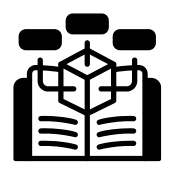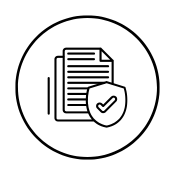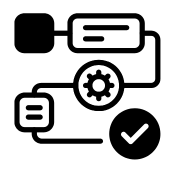ERP Software for Garment Manufacturing Company

Transform Your Garment Manufacturing Operations with Smart ERP Solutions
Apparel industry, efficiency, speed, and precision determine profitability. Garment manufacturers operate in an environment driven by ever-changing customer preferences, fluctuating fabric prices, and intense global competition. Managing such complexities through traditional or disconnected systems often leads to production delays, wastage, and rising operational costs.
This is where a comprehensive ERP software for garment manufacturing companies becomes a game-changer. A robust ERP system integrates every stage of garment production, from design conceptualization to fabric sourcing, cutting, stitching, finishing, and dispatch, into a single, unified platform.
Nakshatra Solutions, a trusted ERP solutions provider with over two decades of industry experience, offers a powerful and customizable ERP suite tailored to meet the unique needs of garment and apparel manufacturers. Their solution is designed to streamline operations, eliminate redundancies, and enable manufacturers to deliver high-quality products on time, every time.
Stitch Your Success Story by Eliminating Production Bottlenecks and Boosting Efficiency
Garment manufacturing is a process-intensive industry where multiple departments—design, procurement, production, quality control, and logistics—must function in perfect sync. Even minor miscommunication or delay can derail entire production schedules.
Nakshatra’s ERP system automates these complex workflows and provides a centralized data hub that keeps everyone connected and informed. From tracking fabric availability to managing style variants, color combinations, and order progress, the ERP ensures end-to-end visibility. This translates into faster production cycles, optimized resource utilization, and improved on-time delivery performance.
Why Modern Apparel Manufacturers Need an Integrated ERP System

Modern apparel businesses can no longer rely on spreadsheets or manual registers to manage complex supply chains and production processes. The garment industry demands agility, traceability, and control at every step—from design sampling to customer delivery.
An integrated ERP platform helps garment manufacturers:
- Consolidate all operations under one system, reducing dependency on multiple software tools.
- Gain real-time insight into production schedules, inventory, and costing.
- Ensure transparency across departments and vendors.
- Facilitate accurate forecasting and planning to reduce overproduction or underutilization.
- Enhance customer satisfaction by improving order accuracy and delivery timelines.
With Nakshatra’s ERP, garment manufacturers can manage multiple product lines, handle bulk orders, and maintain quality consistency across styles and sizes—all while maintaining cost efficiency.
How ERP Helps Manage Design, Production, Costing, and Distribution Seamlessly
Garment manufacturing begins with creative design and ends with distribution, but between these stages lie multiple operational layers—fabric procurement, pattern making, cutting, stitching, finishing, and packaging. Coordinating these manually is both time-consuming and error-prone.
Nakshatra Solutions’ ERP automates and integrates all these processes:
- Design & Sampling: Track sample approvals, manage fabric and trim requirements, and maintain design libraries for repeat orders.
- Production Planning: Schedule jobs, assign resources, and monitor progress at every workstation to eliminate idle time.
- Costing & Budgeting: Automate costing calculations for each product variant considering fabric, trims, labor, and overheads.
- Quality Control: Implement stage-wise quality checks and maintain inspection reports for traceability.
- Distribution & Dispatch: Streamline packaging, labeling, and shipment tracking to ensure timely order fulfillment.
By connecting these functions through a single ERP dashboard, decision-makers get full control over their operations and can react instantly to demand fluctuations or production bottlenecks.
Key Challenges Faced by Garment Manufacturers
Despite technological progress, many garment manufacturers still face systemic challenges that impact efficiency and profitability.
Uncoordinated Production and Inventory Data
Most garment factories maintain separate systems for design, procurement, and production. This leads to misaligned data, duplicate entries, and confusion regarding material availability or production status. For instance, a production line may halt because fabric consumption data wasn’t updated in real-time.
Fluctuating Raw Material Costs and Wastage
The cost of yarns, fabrics, dyes, and trims changes frequently due to market volatility. Without an ERP, tracking real-time cost implications becomes difficult, leading to inaccurate pricing and reduced profit margins. Moreover, unoptimized cutting layouts and poor inventory control result in excessive material wastage.
Manual Costing and Order Tracking
Relying on spreadsheets for costing and order tracking consumes time and increases the risk of human error. It’s challenging to compute per-piece cost accurately when factors like rework, machine downtime, and labor variations aren’t automatically captured.
Quality Control Inconsistencies
Maintaining uniform quality across multiple production batches, sizes, and styles is one of the toughest challenges in garment manufacturing. Without digital inspection systems, quality control remains subjective and reactive rather than preventive.
Vendor and Supplier Communication Gaps
Apparel production depends heavily on timely fabric deliveries, trims, accessories, and subcontracting. Manual communication with suppliers or lack of visibility into vendor schedules causes frequent delays and coordination failures.

Production and efficiency reports
Get real-time visibility into your factory floor operations. The ERP automatically generates detailed reports on line performance, machine utilization, operator efficiency, and production throughput. These insights help management identify underperforming areas and improve overall productivity.

Sales and dispatch analysis
The ERP’s sales and dispatch analytics module consolidates customer orders, invoices, and shipment details into a single dashboard. It helps sales teams evaluate product demand trends, dispatch timelines, and regional performance—empowering them to plan future sales campaigns effectively.

Vendor and supplier performance reports
Garment manufacturers rely on multiple vendors for fabrics, trims, and accessories. Nakshatra ERP evaluates vendor performance using metrics such as on-time delivery, quality compliance, and cost variance. These reports help procurement teams make informed sourcing decisions.

Vendor and supplier performance reports
The ERP compares planned vs. actual costs at every stage—from fabric procurement to packaging—helping management identify leakages. Profitability reports show margins per order, product, or customer, giving finance teams full control over cost optimization.

Cost variance and profitability reports
The ERP compares planned vs. actual costs at every stage—from fabric procurement to packaging—helping management identify leakages. Profitability reports show margins per order, product, or customer, giving finance teams full control over cost optimization.

Brand-wise and customer-specific analysis
For export houses and multi-brand manufacturers, the ERP segregates reports by brand, collection, or customer. This feature helps evaluate which brands or buyers deliver the highest returns, aiding in smarter business negotiations and strategic focus.
How ERP Software Solves These Garment Industry Challenges

An integrated ERP solution built for the apparel sector provides real-time data synchronization, process automation, and actionable insights that transform manufacturing efficiency.
Complete Automation of Production Workflows
Nakshatra’s ERP automates every aspect of garment manufacturing—from generating work orders to updating production status and delivery schedules. It eliminates manual data entry, reduces paperwork, and provides instant access to critical information like job progress, machine utilization, and pending tasks.
For example, once a sales order is confirmed, the ERP automatically generates cutting and stitching plans, assigns them to specific workstations, and updates progress in real time. Managers can instantly identify bottlenecks and take corrective action.
Centralized Management of Raw Materials, Work Orders, and Costing
Nakshatra’s ERP system brings complete transparency into material planning and usage. It tracks raw materials from purchase to consumption, helping manufacturers optimize inventory levels. The system also provides accurate cost breakdowns for each style or batch by combining data from procurement, production, and labor modules.
With this centralized approach, decision-makers can forecast material requirements, negotiate better with suppliers, and maintain profitability without overstocking.
Real-Time Data Visibility and Reporting for Better Decisions
Garment factories often struggle with delayed reporting or fragmented data visibility. Nakshatra’s ERP integrates all departments into a single data flow, offering comprehensive dashboards and analytical reports.
Managers can monitor order-wise performance, analyze fabric yield, calculate machine efficiency, and identify cost leakages instantly. Such visibility supports data-driven decision-making and helps maintain competitiveness even during market volatility.
Enhanced Supplier Collaboration and Compliance Tracking
Managing multiple vendors for fabrics, trims, embroidery, and finishing can be challenging without a unified system. Nakshatra’s ERP simplifies vendor management by providing a centralized supplier portal.
Manufacturers can track vendor performance, evaluate delivery timelines, and maintain communication logs. The system also ensures compliance with buyer standards, certifications, and audit requirements by maintaining digital documentation and traceability.
Streamlined Merchandising, Planning, and Dispatch Processes
Merchandising teams can use Nakshatra’s ERP to manage style catalogs, color variants, BOMs (Bill of Materials), and production samples in one place. The system facilitates seamless coordination between design, sourcing, and production teams, ensuring timely approvals and material readiness.
The ERP also automates dispatch planning—right from packaging and labeling to shipping documentation and logistics coordination. This level of integration ensures that every order is fulfilled accurately and reaches customers on schedule.
Why Choose Nakshatra Solutions for Garment ERP Implementation
Nakshatra Solutions stands out as a technology partner that deeply understands manufacturing intricacies. With over 23 years of experience delivering industry-specific ERP solutions, Nakshatra has empowered manufacturers to transform operations, boost productivity, and achieve sustainable growth.
Their ERP software for garment manufacturers is designed with:
- Modular architecture – choose features you need: production, HR, inventory, CRM, and more.
- Cloud and on-premise deployment options – flexible to your infrastructure needs.
- Customization capability – tailor workflows, reports, and dashboards to your exact business model.
- End-to-end support – implementation, training, AMC, and continuous upgrades.
Nakshatra doesn’t just provide software—it delivers transformation. The company’s consultative approach ensures that every ERP implementation is aligned with the client’s production model, business size, and future scalability goals.
Learn more about how Nakshatra Solutions can help your apparel business grow with intelligent ERP at Nakshatra Solutions.
The Future of ERP in the Garment Industry
As digital transformation reshapes manufacturing, the garment sector is rapidly adopting technologies like AI-driven forecasting, IoT-enabled machine tracking, and cloud-based ERP platforms. ERP systems are no longer limited to data management; they now serve as intelligence engines that guide business strategy.
Future-ready garment manufacturers will rely on ERP systems to:
- Predict demand trends using data analytics.
- Optimize production lines using IoT sensors and machine learning.
- Reduce waste through real-time monitoring and predictive maintenance.
- Enable sustainability tracking and compliance with global standards.
Nakshatra Solutions continues to evolve its ERP suite by integrating such next-generation technologies, helping garment manufacturers stay ahead of competition and market disruptions.
ERP Software for Garment Manufacturing Company
Industry-Specific Modules in ERP for Garment Manufacturing
Garment manufacturing is a highly process-driven industry where efficiency, accuracy, and time-to-market determine profitability. Managing operations manually, especially when dealing with hundreds of SKUs, size variants, and global supply chains, can lead to data silos, errors, and production delays.
A dedicated ERP software for garment manufacturing companies simplifies these complexities by integrating all core business functions into one connected ecosystem.
Nakshatra Solutions, a trusted ERP provider with over two decades of experience in manufacturing automation, offers a comprehensive ERP suite built specifically for the apparel and textile sector. The following modules illustrate how the solution transforms operations across departments.
1. Production Management Module
Track stitching, cutting, dyeing, and finishing operations
The Production Management module ensures seamless coordination across every production stage. It digitally tracks fabric cutting, stitching, dyeing, washing, and finishing, providing supervisors with real-time visibility into each process. Line managers can monitor performance and ensure that every batch meets its delivery schedule.
Auto-generate job cards and monitor production efficiency
Each sales order automatically generates a digital job card containing key details like fabric type, style code, machine assignment, and operator name. The system calculates production efficiency per line or shift, helping managers identify bottlenecks and improve productivity.
2. Material & Inventory Management
Batch-wise tracking of fabric and trims
Garment production relies heavily on accurate material management. Nakshatra’s ERP enables batch-wise tracking of fabrics, threads, zippers, buttons, and trims. Every roll or lot is tagged digitally, making it easy to trace material consumption, returns, and wastage.
Auto-reorder levels and material requirement planning
The system’s smart reorder functionality ensures that material shortages never disrupt production. Auto-generated purchase alerts and material requirement planning (MRP) forecast future needs based on current orders, helping procurement teams plan effectively and reduce overstocking.
3. Cost Management
Capture exact cost per piece or batch
Profit margins depend on precise cost tracking. Nakshatra’s ERP captures the actual cost per garment or batch by accounting for materials, labor, rework, and overheads. Manufacturers gain clarity on their true production cost for each style or collection.
Integrate overheads and yield efficiency
Indirect expenses like maintenance, power, and quality inspections are automatically integrated into cost calculations. Yield reports help identify process inefficiencies, reduce wastage, and improve contribution margins.
4. Quality Control Module
Inspect garments across production stages
Quality management is a core function of garment ERP. The QC module allows real-time inspection during cutting, stitching, finishing, and packing. Defective items can be tagged and tracked, minimizing rework and returns.
Maintain test and compliance records
Maintain digital logs of test results, buyer audits, and compliance documents. This simplifies export documentation and ensures that every product batch meets buyer specifications and global quality standards.
5. Supply Chain Management
Streamlined vendor communication
Garment manufacturers often rely on multiple suppliers for fabrics, trims, and accessories. Nakshatra’s ERP centralizes vendor communication, enabling purchase tracking, delivery scheduling, and performance evaluation—all in one dashboard.
Logistics optimization and dispatch tracking
The system integrates logistics management to optimize delivery routes, assign carriers, and track shipments in real time. Dispatch teams can generate shipping labels, export invoices, and packing lists directly from the ERP.
6. Planning & Merchandising Management
Order-wise planning and scheduling
The planning module ensures that every order is strategically scheduled based on resource availability, fabric readiness, and production capacity. This prevents overlapping orders and maximizes throughput.
Merchandise tracking and delivery planning
Merchandisers can track style variations, color combinations, and fabric utilization with precision. Delivery schedules are automatically aligned with production progress, ensuring timely order fulfillment.
7. Finance & Accounting
Integrated accounts and taxation
Nakshatra ERP combines manufacturing operations with integrated accounting. Every transaction—purchase, sales, payment, or return—is automatically linked to financial ledgers. The system supports GST and multi-currency operations, simplifying statutory compliance.
Real-time profitability and cost-center reporting
With real-time financial dashboards, managers can analyze profitability by order, department, or product category. Cost-center reporting highlights areas of overspending and supports better budget control.
8. CRM & Sales Management
Manage customer orders, quotations, and follow-ups
The CRM module provides a 360° view of customers, managing everything from inquiries and quotations to order confirmations and delivery updates. Automatic reminders ensure timely follow-ups and improved client satisfaction.
Sales forecasting and performance tracking
Historical data and market trends help predict sales demand, enabling proactive production planning. Managers can also monitor salesperson performance, conversion ratios, and pipeline revenue in real time.
9. Business Intelligence & Analytics
Role-based dashboards and KPI monitoring
Nakshatra ERP offers interactive dashboards customized for each user role—whether production heads, merchandisers, or CFOs. KPIs like order efficiency, fabric yield, and on-time delivery rate are updated continuously for informed decision-making.
Comparative reports and predictive insights
The analytics engine provides comparative reports on style performance, supplier reliability, and cost variance. Predictive insights highlight upcoming risks and opportunities, allowing faster response to market changes.
10. Retail POS & E-commerce Integration
Centralized billing and stock updates
For garment manufacturers with retail or online sales, the ERP integrates seamlessly with POS and e-commerce systems. It synchronizes inventory, manages returns, and ensures that billing data flows directly into accounting.
Connect your retail and manufacturing units seamlessly
This two-way integration links production and retail operations, ensuring that manufacturing aligns with actual demand. Stock levels update automatically across outlets, warehouses, and production units—reducing inventory carrying costs.
Advanced Capabilities in Modern ERP for Garment Companies
Today’s apparel industry is evolving rapidly, and ERP solutions must adapt to new business models, smart factories, and real-time analytics. Nakshatra Solutions incorporates next-generation features that make garment operations more intelligent, agile, and connected.
AI-driven forecasting and demand planning
The system uses artificial intelligence to analyze sales patterns, seasonal cycles, and customer preferences. It predicts demand more accurately, helping manufacturers produce the right quantities and minimize overstocking.
Process automation for cutting-to-dispatch workflows
Nakshatra ERP automates repetitive tasks such as job allocation, barcode generation, and dispatch documentation. This eliminates human error, shortens lead times, and ensures process consistency across multiple production lines.
Barcode-based stock management
Every fabric roll, accessory packet, and finished garment can be barcode-tagged, ensuring accurate traceability and instant inventory updates. Barcode-based tracking reduces stock mismatches and speeds up physical verification.
Multilingual and multi-location support
Garment companies with international operations benefit from built-in multilingual and multi-currency features. Multiple production units, warehouses, and sales offices can operate in different regions under one centralized system.
Cloud-based and On-Premise deployment options
Nakshatra ERP offers both cloud-based and on-premise deployment models. Cloud ERP ensures scalability, anytime access, and automatic backups, while on-premise systems provide full data control for manufacturers with internal IT teams.
Customizable ERP for Garment Manufacturing Units
No two garment factories operate alike. A denim manufacturer’s needs differ from a uniform producer’s or a sportswear exporter’s. Recognizing this, Nakshatra Solutions provides a fully customizable ERP that adapts to your business model rather than forcing you to fit a rigid structure.
Can’t find a feature you need? We’ll tailor it for your factory
Add custom modules for sampling, embroidery, or design tracking
Nakshatra’s development team can create bespoke modules for sampling, design approvals, or embroidery order tracking. This ensures every department—creative, production, or finishing—has the tools it needs.
Integration with legacy systems or fashion PLM tools
The ERP integrates seamlessly with existing platforms like Tally, Odoo, or specialized PLM systems used in fashion design. This interoperability protects previous investments while enabling a smooth digital transition.
Personalized dashboards for management and production teams
Decision-makers can access personalized dashboards showing critical metrics—like daily output, pending orders, and cost deviations. Line supervisors can track operator performance, machine downtime, and defect trends in real time.
Key Benefits of ERP Software for Garment Manufacturing Company
Implementing ERP software delivers measurable improvements in production speed, cost control, and collaboration. Below are the key benefits that manufacturers experience after adopting Nakshatra Solutions’ garment ERP.
Faster production cycles and reduced lead times
Automated workflows eliminate redundant approvals and manual data entry, allowing faster order processing. Real-time tracking ensures every order moves seamlessly from design to dispatch.
Improved accuracy in costing and forecasting
With centralized data, cost calculations become precise and consistent. Forecasting tools analyze historical data to plan procurement and production accurately—preventing costly overproduction.
Zero manual errors in planning and inventory
Automation and barcode scanning reduce dependency on spreadsheets. Stock discrepancies, missed materials, and manual entry errors are virtually eliminated.
Enhanced collaboration between departments
The ERP connects design, merchandising, production, and finance teams under one digital ecosystem. Each department can access the same real-time data, improving coordination and communication.
Compliance-ready documentation and reporting
From buyer audits to government filings, the system generates all required documentation in a standardized, compliance-ready format. Exporters benefit from simplified customs documentation and order traceability.
Real-time decision-making through analytics
Executives gain complete visibility across business functions. Smart dashboards highlight production delays, cost overruns, and order priorities, enabling timely corrective action.
On-Cloud and On-Premise ERP Options
Every garment manufacturer operates differently—some prefer the flexibility of cloud systems, while others require the data control of on-premise setups. Nakshatra Solutions provides both options, along with hybrid models, ensuring scalability and reliability for every type of business.
Cloud ERP for multi-location garment manufacturers
Cloud ERP is ideal for companies operating multiple factories, warehouses, or retail outlets. Users can access the system anytime, anywhere, from any device. Automatic data synchronization ensures that every location—whether domestic or overseas—operates on the same updated information. This reduces communication lags and simplifies centralized reporting.
On-premise ERP for large-scale units with in-house IT
For large export houses or enterprises with dedicated IT teams, the on-premise model offers complete data security and control. All operations are managed within the company’s internal servers, allowing deeper system customization and integration with existing infrastructure.
Hybrid models for flexible scalability
Nakshatra ERP also supports hybrid deployment—where mission-critical functions run on-premise while other departments operate on the cloud. This model offers flexibility, reduced infrastructure cost, and seamless scalability as business requirements evolve.
How ERP Helps Apparel Manufacturers Save Time and Money
Implementing an ERP is not just about digitizing operations—it’s about transforming how resources are used. By connecting departments, automating workflows, and enhancing visibility, Nakshatra Solutions’ ERP helps apparel businesses significantly reduce waste, effort, and costs.
Reduce administrative overheads
Manual data entry, spreadsheets, and repetitive paperwork consume valuable time. ERP automation eliminates these inefficiencies by centralizing data entry and synchronizing transactions across departments—reducing labor costs and administrative overheads.
Minimize wastage and material loss
With material requirement planning and real-time stock tracking, manufacturers can cut fabric wastage and avoid over-purchasing. The system tracks usage patterns and automatically alerts teams about under-utilized stock, ensuring maximum material efficiency.
Optimize production planning and scheduling
Production delays often stem from poor scheduling and lack of visibility. Nakshatra’s ERP automates production planning based on order priorities, available fabric, and line capacity—reducing idle time and improving on-time delivery performance.
Automate compliance and quality assurance processes
From audit trails to buyer documentation, the ERP automates compliance processes and generates all reports in approved formats. This minimizes the risk of penalties or rejections during export inspections and ensures smoother coordination with regulatory authorities.
How to Choose the Right ERP Software for Garment Manufacturing Company
Selecting an ERP system is a strategic decision that can shape your business operations for years to come. To ensure long-term success, consider the following factors before implementation.
1. Ensure industry-specific functionality
Generic ERP systems often fail to address the unique needs of garment manufacturing—like size and color variants, sample management, or style-wise costing. Choose a system like Nakshatra ERP, purpose-built for apparel operations, with dedicated modules for every production stage.
2. Check for scalability and modularity
Your ERP should grow with your business. A modular system allows you to start with essential modules—such as production and inventory—and add more features like CRM, HR, or analytics as your operations expand.
3. Evaluate integration capabilities with CRM, PLM, or POS
Integration is key to smooth digital transformation. Ensure the ERP can easily connect with your existing CRM, PLM, or e-commerce systems to create a unified workflow and avoid data duplication.
4. Prioritize real-time analytics and dashboards
Modern decision-making relies on live data. Choose an ERP that offers interactive dashboards and analytics to help you monitor KPIs such as order efficiency, delivery timelines, and cost control.
5. Compare Cloud vs. On-Premise deployment
Your infrastructure and data policies determine the right deployment model. Cloud ERP offers flexibility and mobility, while on-premise systems offer control and customization. Nakshatra provides both, helping you choose what fits your operational structure.
6. Consider vendor support and customization flexibility
A reliable ERP vendor should offer dedicated post-implementation support and the ability to customize modules according to your unique workflows. Nakshatra Solutions provides end-to-end support—from data migration to staff training and feature updates.
7. Analyze total cost of ownership (TCO)
ERP investment should be evaluated over the long term. Compare not just the licensing costs but also maintenance, training, upgrades, and scalability options. Nakshatra’s modular pricing model ensures you pay only for what you use.
Frequently Asked Questions (FAQ)
What is the best ERP for garment manufacturing companies?
The best ERP for garment manufacturing is one that integrates production, inventory, costing, quality, and finance into a single system. Nakshatra Solutions offers a specialized ERP built for apparel manufacturers, providing complete visibility and automation across all processes.
Can ERP handle fabric variants and size breakdowns?
Yes. Nakshatra ERP allows detailed tracking of fabric rolls, color shades, and size ratios. It supports multi-dimensional inventory management—crucial for garment manufacturers dealing with size sets and style variations.
Is ERP software customizable for export-oriented units?
Absolutely. Export units require specialized documentation, compliance, and multi-currency capabilities. Nakshatra ERP supports export order processing, buyer-wise costing, and shipping documentation, ensuring global compliance.
What are the implementation timelines for garment ERP?
Implementation depends on company size, process complexity, and customization needs. Typically, small to mid-sized garment firms can go live in 6–10 weeks, while large enterprises may require phased rollouts over 3–6 months.
Can I integrate my existing accounting or POS systems?
Yes. Nakshatra ERP seamlessly integrates with existing accounting tools such as Tally, QuickBooks, or SAP, as well as retail POS and e-commerce platforms. This ensures smooth data flow across departments without disrupting existing systems.




